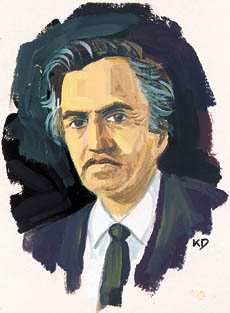IT is rare to have two Nobel Laureates in one family, but astrophysicist and applied mathematician S. Chandrasekhar and his uncle, Sir C. V. Raman were one such exception. Taking into account his outstanding academic performance, the Madras University offered Chandrasekhar a research scholarship that took him to Cambridge in 1930, where he was to become Fellow of the Trinity College. He later moved to do research in the United States, and eventually became its citizen in 1953.
 Quite early he observed similarities between stars and atoms, and he predicted the fate of dying stars by studying the behaviour of atoms. He showed that a star couldn't continue to shine forever in its present state. A time comes when fundamental changes occur in its interior because of the exhaustion of nuclear fuel supply, resulting in shrinkage of its core with an enormous distension of its outer envelope. But he argued that continual compression of the stellar core had its limit.
Quite early he observed similarities between stars and atoms, and he predicted the fate of dying stars by studying the behaviour of atoms. He showed that a star couldn't continue to shine forever in its present state. A time comes when fundamental changes occur in its interior because of the exhaustion of nuclear fuel supply, resulting in shrinkage of its core with an enormous distension of its outer envelope. But he argued that continual compression of the stellar core had its limit.
As the core of the star becomes degenerate because of stripped atomic nuclei and electrons, it loses the power to balance the pressure and gravitational attraction at its periphery by adjusting its radius unless the core happens to remain below a certain limiting mass. This is the famous Chandrasekhar Limit. He shared the Nobel Prize for his outstanding work in 1983 with W. A. Fowler. One of his ardent admirers, James Kemp, wrote to him, ' I am overjoyed, Professor Chandrasekhar. It is forty years late.'
Although he did emigrate to the US, he was in constant touch with scientific and cultural developments back home. 'I mean it is a remarkable thing,' he observed, 'that in the modern era before 1910, there were no [Indian] scientists of international reputation or standing. Between 1920 and 1925, we suddenly had five or six internationally well-known men.
![]() http://www.tribuneindia.com/2000/20000102/spectrum/main2.htm
http://www.tribuneindia.com/2000/20000102/spectrum/main2.htm
No comments:
Post a Comment